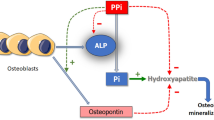Summary
Phosphorus-31 nuclear magnetic resonance spectroscopy was used to analyze urine samples obtained from patients treated with ifosfamide (IF). This technique allows the individual assay of all phosphorated metabolites of IF in a single analysis without the need for prior extraction. In addition to the classic IF metabolites 2-dechloroethylifosfamide (2DECIIF), 3-dechloroethylifosfamide (3DECIIF), carboxyifosfamide (CARBOXYIF), and iso-phosphoramide mustard (IPM), several signals corresponding to unknown phosphorated compounds were observed. Four of them were identified: one is alcoifosfamide (ALCOIF), two come from the degradation of 2,3-didechloroethylifosfamide (2,3-DECIIF), and one results from the decomposition of 2DECIIF. The total cumulative drug excretion as measured over 24 h in nine patients was 51% of the injected IF dose; 18% of the dose was recovered as unchanged IF. The major urinary metabolites were the dechloroethylated compounds, with 3DECIIF excretion (11% of the injected dose) always being superior to 2DECIIF elimination (4% of the injected dose). Degradation compounds of 2DECIIF and 2,3DECIIF represented 0.4% of the injected dose. The metabolites of the dechloroethylation pathway always predominated over those of the activation pathway (CARBOXYIF, ALCOIF, and IPM, representing 3%, 0.8%, and 0.2% of the injected dose, respectively). In all, 14% of the injected dose was excreted as unknown phosphorated compounds. The interpatient variation in levels of IF metabolites was obvious and involved all of the metabolites. Renal excretion was not complete at 24 h, since 11% of the injected dose was recovered in the 24- to 48-h urine samples.
Similar content being viewed by others
References
Allen LM, Creaven PJ, Nelson RL (1976) Studies on the human pharmacokinetics of isophosphamide (NSC-109724). Cancer Treat Rep 60: 451
Boos J, Welslau U, Ritter J, Blaschke G, Schellong G (1991) Urinary excretion of the enantiomers of ifosfamide and its inactive metabolites in children. Cancer Chemother Pharmacol 28: 455
Brock N (1979) The special position of ifosfamide in the series of cytostatically active oxazaphosphorines. In: BW Fox (edn) Advances in medical oncology, research and education, vol 5. Basis for cancer therapy 1. Pergamon, Oxford New York, p 39
Brock N (1989) Oxazaphosphorine cytostatics: past-present-future. Seventh Cain Memorial Award lecture. Cancer Res 49: 1
Brock N, Hohorst HJ (1977) The problem of specificity and selectivity of alkylating cytostatics: studies onN-2-chloroethylamidooxazaphosphorines. Z Krebsforsch 88: 185
Brock N, Hilgard P, Peukert M, Pohl J, Sindermann H (1988) Basis and new developments in the field of oxazaphosphorines. Cancer Invest 6: 513
Creaven PJ, Allen LM, Alford DA, Cohen MH (1974) Clinical pharmacology of isophosphamide. Clin Pharmacol Ther 16: 77
Goren MP (1991) Determination of urinary 2- and 3-dechloroethylated metabolites of ifosfamide by high-performance liquid chromatography. J Chromatogr Biomed Appl 570: 351
Goren MP, Wright RK, Pratt CB, Pell FE (1986) Dechloroethylation of ifosfamide and neurotoxicity. Lancet II: 1219
Goren MP, Pratt CB, Viar MJ (1989) Tubular nephrotoxicity during long-term ifosfamide and mesna therapy. Cancer Chemother Pharmacol 25: 70
Lewis LD, Meanwell CA (1990) Ifosfamide pharmacokinetics and neurotoxicity. Lancet 335: 175
Lind MJ, Margison JM, Cerny T, Thatcher N, Wilkinson PM (1989) Comparative pharmacokinetics and alkylating activity of fractionated intravenous and oral ifosfamide in patients with bronchogenic carcinoma. Cancer Res 49: 753
Lind MJ, Roberts HL, Thatcher N, Idle JR (1990) The effect of route of administration and fractionation of dose on the metabolism of ifosfamide. Cancer Chemother Pharmacol 26: 105
Martino R, Crasnier F, Chouini-Lalanne N, Gilard V, Niemeyer U, Forni M de, Malet-Martino MC (1992) A new approach to the study of ifosfamide metabolism by the analysis of human body fluids with31P nuclear magnetic resonance spectroscopy. J Pharmacol Exp Ther 260: 1133
Misiura K, Okruszek A, Pankiewicz K, Stec WJ, Czownicki Z, Utracka B (1983) Stereospecific synthesis of chiral metabolites of ifosfamide and their determination in the urine. J Med Chem 26: 674
Nelson RL, Allen LM, Creaven PJ (1977) Pharmacokinetics of divided-dose ifosfamide. Clin Pharmacol Ther 19: 365
Ninane J, Baurain R, Kraker J de, Ferster A, Trouet A, Cornu G (1989) Alkylating activity in serum, urine and CSF following high-dose ifosfamide in children. Cancer Chemother Pharmacol 24 [Suppl]: S2
Norpoth K (1976) Studies on the metabolism of isophosphamide (NSC-109 724) in man. Cancer Treat Rep 60: 437
Sladek NE (1988) Metabolism of oxazaphosphorines. Pharmacol Ther 37: 301
Smeitink J, Verreussel M, Schröder C, Lippens R (1988) Nephrotoxicity associated with ifosfamide. Eur J Pediatr 148: 164
Struck RF, Dykes DJ, Corbett TH, Suling WI, Trader MW (1983) Isophosphoramide mustard, a metabolite of ifosfamide with activity against murine tumours comparable to cyclophosphamide. Br J Cancer 47: 15
Watkin SW, Husband DJ, Green JA, Warenius HM (1989) Ifosfamide encephalopathy: a reappraisal. Eur J Cancer Clin Oncol 25: 1303
Author information
Authors and Affiliations
Additional information
This research was financially supported by the Association pour la Recherche sur le Cancer (grant 6635) and by the Ligue Nationale Française contre le Cancer (Comité des Hautes-Pyrénées)
Rights and permissions
About this article
Cite this article
Gilard, V., Malet-Martino, M.C., de Forni, M. et al. Determination of the urinary excretion of ifosfamide and its phosphorated metabolites by phosphorus-31 nuclear magnetic resonance spectroscopy. Cancer Chemother. Pharmacol. 31, 387–394 (1993). https://doi.org/10.1007/BF00686153
Received:
Accepted:
Issue Date:
DOI: https://doi.org/10.1007/BF00686153




